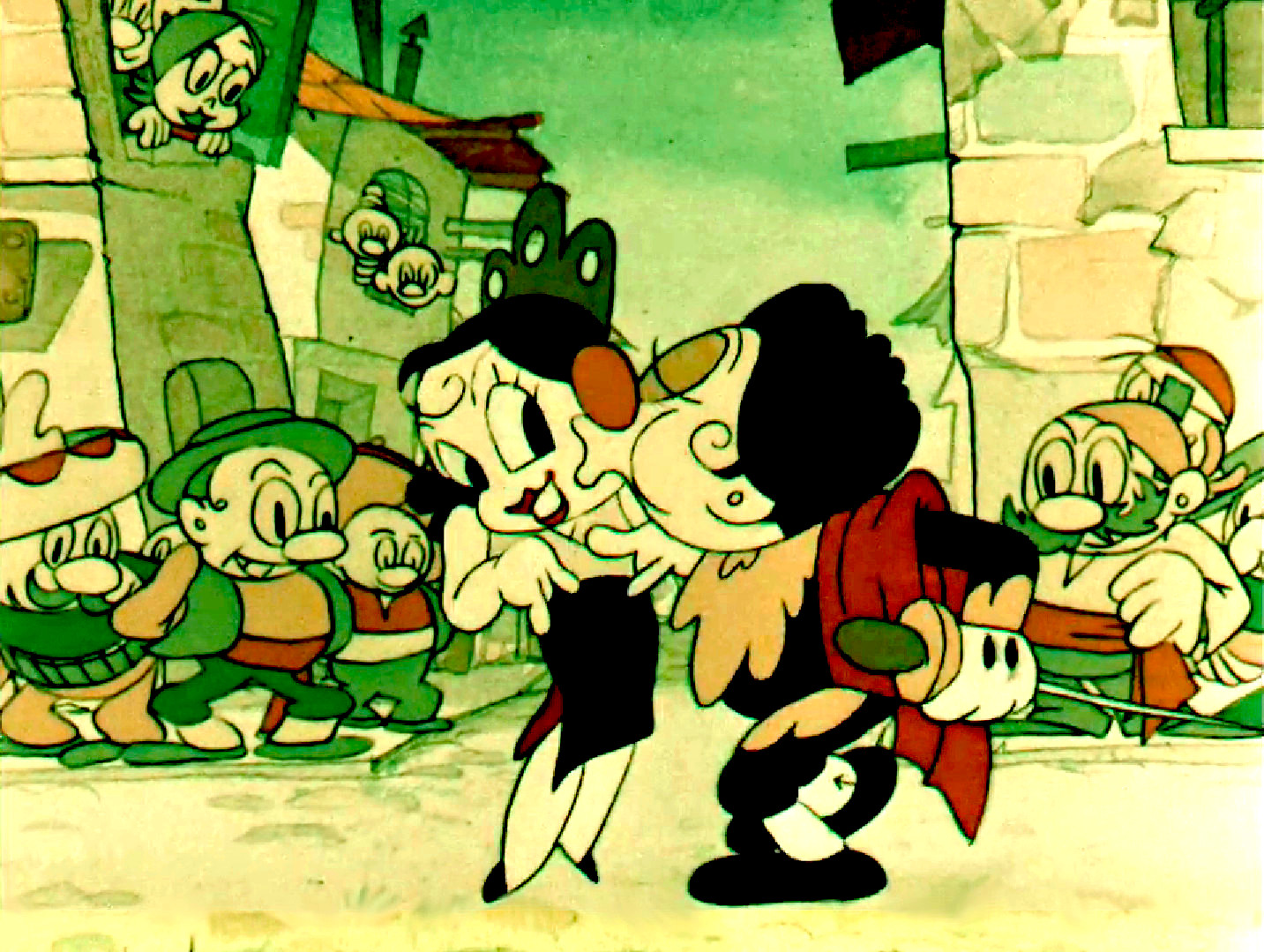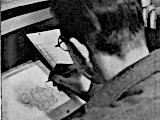

|
 | Jørgen Myller(1910-1995) |  |
||
|
Danish animator Jørgen Myller was born Jørgen Müller, son of wine merchant Sigurd Müller, in 1910 in the town of Aalborg. As a 16-year-old schoolboy, inspired by the animated films of the Danish artist Storm P (Robert Storm Petersen), Jørgen attempted to make his own cartoon film, but was not happy with the result. At the age of 18, after a couple of years working as trainee in his father's business, which he did not take to, he became an apprentice at a Berlin advertising agency. He quickly showed a flair for stylish design, and after a year he was sent to the company's London branch. There he came in contact with Super-Ads, a company set up to make animated advertising films, and was hired by them. Initially he was a designer – his first job was designing a film to accompany Jack Hylton's band playing Tiptoe Through the Tulips to be shown on stage during their run at the Palladium, which Sid Griffiths and Brian White animated – but working with Sid Griffiths he quickly got the hang of animation. While in London Müller became aware that people assumed from his surname that he was German, and so he changed the spelling to Myller. Super-Ads closed down at the end of 1931 and Jørgen Myller returned to Denmark, keen to make animated cartoons there. He formed a company, the Animated Cartoon Compagny, with French businessman Yvon Denise in Copenhagen. His staff included Anker Roepstorff, a fellow jazz enthusiast he met in a record shop, who wrote scripts and became a prolific inbetweener, and Henning Dahl Mikkelsen, a talented young designer and cartoonist who quickly took to animation, as well as some young women as tracers annd painters. The company was immediately approached by adverting agencies and made a range of commercial cartoons. Their ultimate goal, however, was to make entertainment shorts, and they were greatly influenced by the American cartoons, particularly those of Hugh Harman and Rudolph Ising, who had left Disney's in 1927, when Charles Mintz took over Oswald the Lucky Rabbit and subsequently created the Bosko series for Leon Schlesinger's Looney Tunes. The Danish studio's first entertainment cartoon, Et bankkup (A Bank Robbery) released in February 1934, featured a black-and-white character who was virtually Bosko's double. Bosko was meant to be an African American youth, but his design was basically Mickey Mouse without the ears – a standard black and white cartoon character. Myller's character was called Columbus and in the film he is a policeman, chasing the bank robber Sugar Foot Bill by riding a cow on roller skates. Jazz musicians Erik Kragh and Leo Mathiesen supplied the music and the voices, and the film was made in English for international sales. It made a loss, however, and finance for the proposed series could not be secured. While the fim was in production Anker Roepstorff had scripted his idea for a short cartoon burlesque of Carmen. Myller thought that as a Danish studio they should make a version of a Hans Christian Andersen story, and selected The Tinder Box. Character models (and possibly layouts) for this were drawn up, but there was no money for either project to go into full production and the studio concentrated on its advertising work. Later in 1934 Myller left Copenhagen for London, and a few days later Roepstorff and Mikkelsen received a letter telling them that he was now working for a new cartoon studio, British Utility Films, with Sid Griffiths, and urging them to close the Copenhagen studio and come and join him. The three Danes worked on advertising films for British Utility Films until 1935, when wealthy producer Archibald Nettleford set up a new studio, Anglia Films to be headed by veteran animator Anson Dyer. Dyer had continued to make films using cutout animation, but the new company was to make fully animated cel cartoons, in colour, both for advertising and entertainment films, and Griffiths and the Danes were recruited to provide the animation. The colour system to be used was the two-colour Dunningcolor process. The studio was situated in Jermyn Street, in the well-to-do St James's area of London. Dyer now took the roll of producer, with Griffiths directing and the Danes providing the design and animation. The Danes presented Dyer with the script for Carmen and Dyer agreed to put it into production. However, the subsequent idea of basing a cartoon on Stanley Holloway's comic monologue Old Sam (aka Pick Oop Tha' Musket) seemed more likely to be a success, and took priority when it came to releasing the films. Sam and his Musket premiered at the Rialto, Coventry Street, on 8 November 1935, with the second in the proposed Sam Small series already in production, and Carmen was finally released along with this film, 'Alt! 'Oo Goes Theer? in April 1936. Four more Sam Small cartoons followed – Sam's Medal, Beat the Retreat, Drummed Out and Three Ha'pence a Foot (Sam's charge for timber when Noah builds his Ark in Yorkshire!) – as well as the first of a planned series based on Holloway's other famous monologue, The Lion and Albert, and the studio was also making advertising films for various clients. Despite their popularity the entertainment films were not making a profit, and Nettlefold's accountants advised him to cut his losses. The Danes were getting homesick, and returned to Denmark during 1937, Roepstorff in the spring, Mikkelsen in the autumn, followed shortly after by Myller. Myller started a cartoon studio for Gutenberghus Reklame Film making advertising films and was joined by Anker Roepstorff. Børg Ring and Bjørn Frank Jensen were employed as trainees. In the spring of 1939 the studio became part of the German film company Vepro, a move apparently organised by German Propaganda Minister Joseph Goebbels who was keen to use cartoons for propaganda purposes. Myller, Mikkelsen and Roepstorff continued making successful advertising films, both for Denmark and other countries, but after the German invasion of Denmark in 1940 working for a German company became looked on as a form of collaboration, to the animators' discomfort. When the German director of the company was called up for military service, the Danish arm of Vepro closed down in the Autumn of 1942. Myller and Mikkelsen continued production under the name Mik & Myller Film for a while, but eventually Myller stopped animating to concentrate on illustration. He studied the style of American magazines like the Saturday Evening Post, with its covers by illustrators like Norman Rockwell, and in 1950 started working for the Danish magazine Hjemmet. He returned to animation in 1975, moving to Paris to work for Albert Uderzo and René Goscinny's cartoon studio, Idédix, where he animated Obelix in the Asterix films and the dog Idéfix in a series of short cartoons for French TV. After a while he returned to work from home, delivering his scenes to Paris when completed. He also made a few films for Danish clients, including a series of cartoons for DR TV's sports programme. Around 1983 Myller returned to the magazine Hjemmet as an illustrator. He does not seem to have been involved with any further animation. Jørgen Myller died in 1995, aged 85.
|
Filmography (UK productions only) | ||||
| Tiptoe Through the Tulips | (Super-Ads, 1929) Animator | |||
| various advertising films | (Super-Ads, 1930-1931) Animator | |||
| various advertising films | (British Utility Films, 1934-1935) Animator | |||
| Sam and his Musket | (Anglia Films, 1935) Animator | |||
| Carmen | (Anglia Films, 1936) Animator | |||
| 'Alt 'Oo Goes Theer? | (Anglia Films, 1936) Animator | |||
| Beat the Retreat | (Anglia Films, 1936) Animator | |||
| Sam's Medal | (Anglia Films, 1936) Animator | |||
| The Lion and Albert | (Anglia Films, 1937) Animator | |||
| Drummed Out | (Anglia Films, 1937) Animator | |||
| Three Ha'pence a Foot | (Anglia Films, 1937) Animator | |||
| Gunner Sam | (Anglia Films, 1937) Animator | |||
| The King with the Terrible Temper (Advertising film for Bush Radios) | (Anglia Films, 1937) Animator | |||
Links to Other Sites | ||||
|
DANSK TEGNEFILMS HISTORIE DANISH CARTOONS 1930-1942 Danish site giving a history of Danish animation, by animator and historian Harry Rasmussen. Website Title Description. Website Title Description. |
Peter Hale
Last updated 2024
|